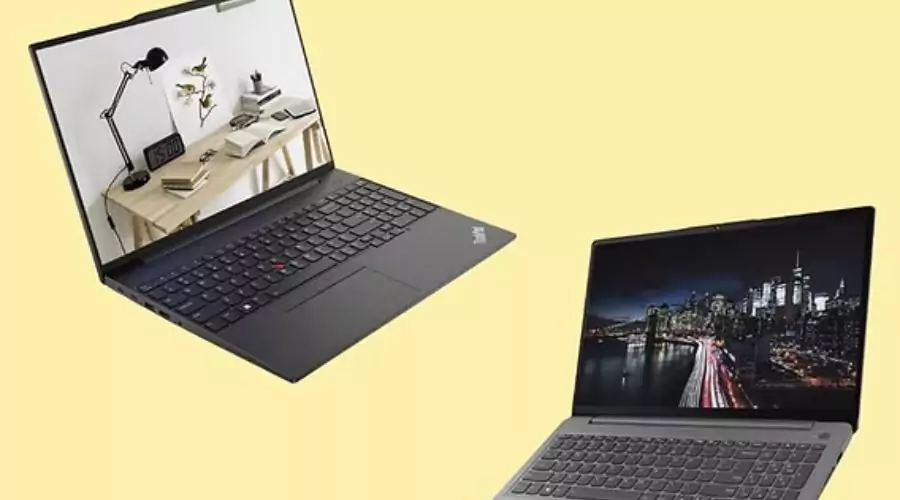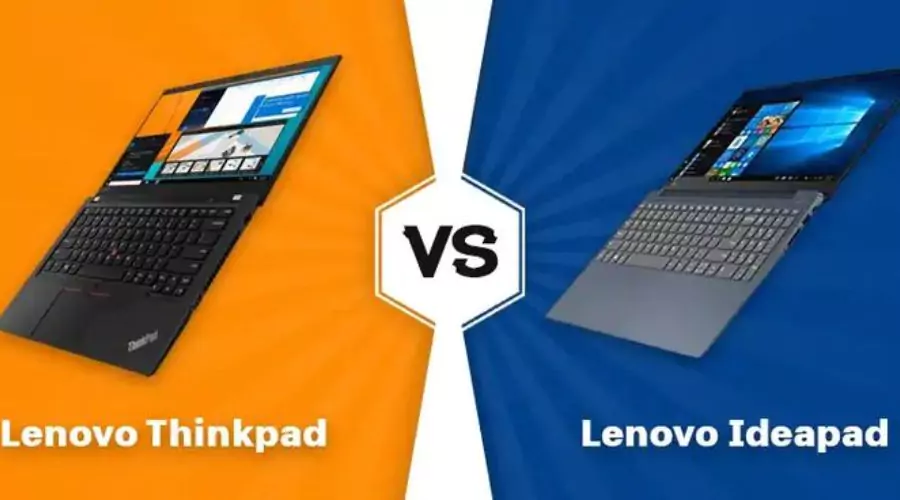When it comes to buying a new laptop, Lenovo offers two of the most popular choices: the Lenovo ThinkPad vs IdeaPad. While both are excellent in their ways, they serve different purposes. ThinkPads are built for business and professional use, while IdeaPads cater more to students and everyday users. So, which one is right for you? Let’s dive into the details of Lenovo ThinkPad vs IdeaPad to help you make the best decision.
Lenovo ThinkPad vs IdeaPad: Which One is Best for You?

- For professionals and power users: A ThinkPad is the best option. Look for models with the latest processors, at least 16GB of RAM, and SSD storage for smooth performance.
- For students and casual users: An IdeaPad is a great choice. Pick a model with a decent battery life and Full HD display for a balanced experience.
- For frequent travelers: Go for a ThinkPad with extended battery life and lightweight design.
- For budget-conscious buyers: An IdeaPad offers excellent value without breaking the bank.
- For security-focused users: ThinkPads come with enterprise-level security features, making them the safer choice.
Lenovo Laptop Comparisons
Design & Build Quality
ThinkPads are all about business. They’re built like tanks, with MIL-STD durability ratings, spill-resistant keyboards, and that signature matte black look. They might not be flashy, but they’re designed to last. IdeaPads, on the other hand, lean more toward sleek and modern aesthetics. They come in a variety of colors and designs, making them a better choice for those who want something visually appealing without the rugged industrial feel. If a lightweight, portable laptop is the goal, IdeaPads has more options that cater to portability over extreme durability.
Performance & Power
ThinkPads don’t play around when it comes to performance. They pack powerful processors and high RAM configurations, and some even feature workstation-grade GPUs, making them ideal for professionals, engineers, and power users. They’re built to handle intensive workloads like coding, video editing, and data analysis without breaking a sweat. IdeaPads, while still solid, are more consumer-focused. They handle everyday tasks like browsing, streaming, and light productivity with ease, but they won’t compete with a high-end ThinkPad in terms of raw power. That said, some higher-end IdeaPad models do come with decent specs, making them a good mid-range choice for those who want more power without going all-in on a ThinkPad.
Keyboard & Trackpad
One area where ThinkPads dominates is the keyboard. The typing experience is unmatched, with deep key travel, a satisfying tactile response, and that iconic red TrackPoint for precise cursor control. ThinkPads are favored by writers, programmers, and anyone who spends hours typing every day. IdeaPads have decent keyboards, but they don’t come close to the legendary ThinkPad experience. If heavy typing is part of the daily routine, ThinkPads are the way to go. Trackpads on IdeaPads are often smoother and more optimized for gesture controls, making them better suited for casual users who rely on touch-based navigation.
Display & Multimedia
Both lineups offer a range of display options, but ThinkPads generally have higher-end choices like 4K panels, better color accuracy, and anti-glare coatings. These features make them better for professionals who work with graphics, video editing, or detailed design work. IdeaPads cater more to casual users, with vibrant screens that are great for entertainment. They tend to have glossy displays that enhance color vibrancy, making them ideal for watching movies and videos. If color precision for creative work is a priority, ThinkPads edge out the competition of Lenovo ThinkPad vs IdeaPad. However, IdeaPads offers a wider variety of touchscreen models, making them appealing to those who want more flexibility in how they use their laptops.
Battery Life
ThinkPads are optimized for longevity, often lasting an entire workday or more on a single charge. They come with efficient power management and larger battery options. Some models even have swappable batteries, making them perfect for those who travel or work on the go. IdeaPads provide decent battery life, but they prioritize portability and thin designs over extended endurance. Most models will get through a standard work or school day, but they may require charging more frequently than a ThinkPad, especially under heavy use.
Software & Features
ThinkPads come loaded with business-focused features like biometric security, encryption tools, and enterprise-level software support. They’re designed with professionals in mind, ensuring maximum security and seamless integration into work environments. Some models even include vPro processors for enhanced remote management. IdeaPads are more consumer-friendly, focusing on ease of use and entertainment. They come with Windows 11 Home by default and are less bloated with business-oriented features, making them more accessible to the average user. While security isn’t as robust as on a ThinkPad, many IdeaPads still offer fingerprint readers and basic encryption for peace of mind.
Price & Value
They’re budget-friendly, offering great value for students, casual users, and anyone who doesn’t need top-tier performance. They provide solid specs for their price, making them one of the best options for those who need a reliable laptop without spending too much. ThinkPads, while more expensive, justify the price with durability, security features, and business-grade performance. It’s an investment in longevity and reliability. If the budget allows, a ThinkPad can be a long-term workhorse that lasts for years without major issues.
Lenovo ThinkPad vs IdeaPad: Which One is the Winner?

- Pick a ThinkPad if durability, performance, and an unbeatable typing experience are priorities. Ideal for professionals, programmers, and anyone who needs a robust machine that can handle demanding workloads.
- Go for an IdeaPad if an affordable, stylish, and lightweight laptop for everyday use sounds more appealing. Perfect for students, casual users, and multimedia enthusiasts who prioritize portability and entertainment features.
Conclusion
At the end of the day, Lenovo ThinkPad vs IdeaPad caters to different users. ThinkPads are built for professionals who need power, durability, and security, while IdeaPads focuses on everyday users looking for affordability, style, and convenience. If reliability, performance, and longevity are top priorities, the ThinkPad is the clear winner. But for those who just need a solid, budget-friendly laptop for daily tasks, an IdeaPad is a great choice.
For more information on Lenovo ThinkPad vs IdeaPad, visit Trendingcult.

